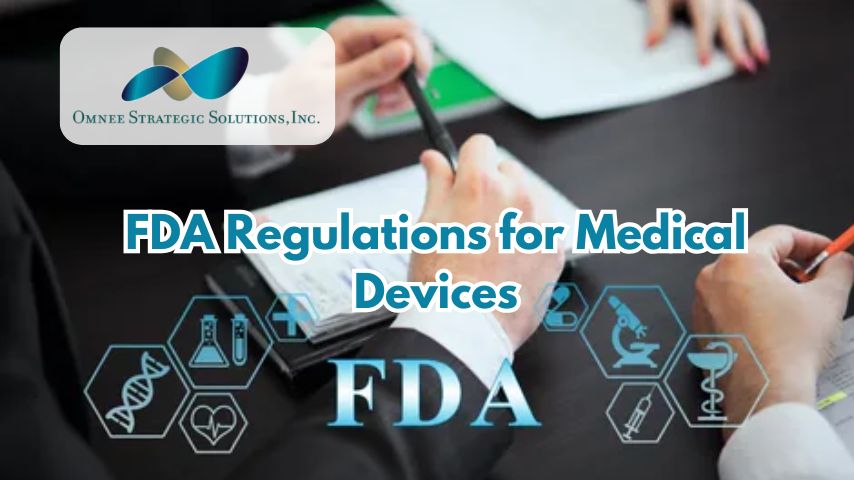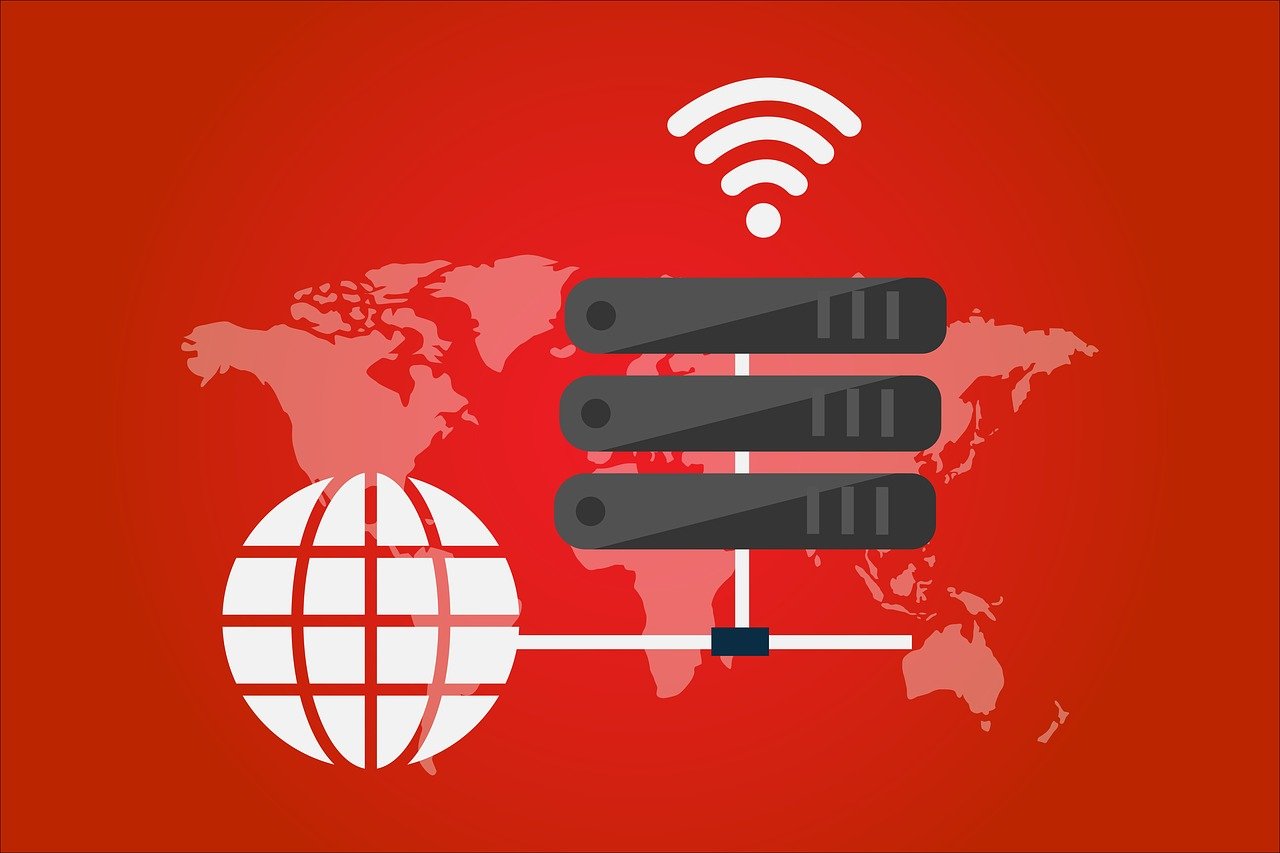FDA Regulations Impact Innovation in Medical Device Technology

Strong 8k brings an ultra-HD IPTV experience to your living room and your pocket.
Medical device technology is one of the most dynamic and rapidly advancing fields in healthcare. From life-saving devices like pacemakers to sophisticated diagnostic tools such as MRI machines, innovation in this space has drastically improved patient care. However, the development and commercialization of medical devices are closely monitored and regulated by the U.S. Food and Drug Administration (FDA). While FDA Regulations for Medical Devices ensure patient safety and product efficacy, they also influence the pace and direction of innovation. In this blog, we’ll explore how these regulations impact innovation in medical device technology and examine the role of companies like Omnee Strategic Solutions in navigating this complex landscape.
The Role of FDA Regulations for Medical Devices
The FDA plays a critical role in overseeing the safety and effectiveness of medical devices before they enter the market. This oversight is achieved through a structured process of regulatory approvals, ongoing surveillance, and post-market evaluations. FDA regulations for medical devices are designed to ensure that the products being developed and sold meet specific safety and efficacy standards. However, these regulations can also affect how quickly new innovations can be introduced to the market.
Key FDA Regulatory Pathways:
Premarket Approval (PMA): This is the most stringent regulatory process and is required for high-risk medical devices. The PMA process requires extensive clinical testing to prove the safety and effectiveness of the device.
510(k) Clearance: This pathway is for devices that are substantially equivalent to existing products. Companies need to demonstrate that their device is at least as safe and effective as a legally marketed device.
De Novo Pathway: This regulatory option is for novel devices that do not have an existing equivalent but are considered low- to moderate-risk. It allows for more flexibility in the approval process while still ensuring safety and efficacy.
These pathways are essential for maintaining the safety of medical devices, but they also introduce challenges that can slow down the pace of innovation.
How FDA Regulations Can Hinder Innovation
1. Time-Consuming Approval Process
One of the biggest challenges innovators face is the time it takes to bring a new medical device to market. The FDA’s rigorous approval process often requires extensive testing, clinical trials, and documentation, which can take several years. For groundbreaking technologies, the lengthy approval process can delay the introduction of potentially life-saving devices.
For example, developers of cutting-edge medical devices such as wearable health monitors or AI-driven diagnostic tools may face years of testing and regulatory review before receiving FDA clearance. This delay can prevent patients from accessing innovative treatments and can stifle the competitive advantage that early market entry would provide.
2. High Costs of Compliance
In addition to time, the financial burden of complying with FDA regulations for medical devices can be enormous. The costs associated with preclinical studies, clinical trials, and regulatory submission can quickly add up, making it difficult for smaller startups and innovators to compete. Large medical device companies are better equipped to absorb these costs, but for new entrants or smaller businesses, the financial hurdles can stifle innovation.
Omnee Strategic Solutions, a consultancy specializing in regulatory compliance, helps innovators navigate these costly challenges by offering strategies to streamline the approval process without compromising safety or efficacy.
3. Risk-Averse Environment
The FDA’s primary goal is to protect public health, which often means erring on the side of caution. This cautious approach can create a risk-averse environment where companies are less willing to invest in highly innovative but unproven technologies. The fear of being denied approval or facing lengthy delays can discourage risk-taking, causing developers to focus on incremental improvements to existing devices rather than pushing for breakthrough innovations.
4. Challenges with Emerging Technologies
Emerging technologies, such as AI-driven diagnostics, 3D printing, and personalized medicine, often don’t fit neatly into the existing regulatory frameworks. The FDA’s processes, developed with traditional medical devices in mind, may struggle to keep pace with the rapid advancements in these fields. The lack of clear regulatory pathways for these technologies can lead to uncertainty, delays, and increased costs, all of which can inhibit innovation.
How FDA Regulations Encourage Innovation
While FDA regulations for medical devices can pose challenges, they also play an important role in fostering innovation, especially when it comes to patient safety and public trust. In some ways, regulations encourage companies to develop higher-quality, more effective devices.
1. Focus on Patient Safety
The FDA’s rigorous requirements push companies to prioritize patient safety and effectiveness. This focus ensures that only the most reliable and well-tested devices reach the market. In the long run, this emphasis on safety can drive companies to invest in better research and development practices, leading to more innovative and reliable products.
2. Streamlined Pathways for Innovation
While the approval process can be slow, the FDA has made efforts to create pathways that support innovation. The De Novo pathway, for example, allows companies developing novel devices to avoid the time-consuming PMA process while still demonstrating safety and efficacy. Additionally, the FDA’s “Breakthrough Devices Program” helps accelerate the development, assessment, and review of medical devices that provide more effective treatment or diagnosis for life-threatening or irreversibly debilitating diseases.
Omnee Strategic Solutions works closely with innovators to take advantage of these streamlined pathways, helping companies navigate the complex regulatory environment more efficiently.
3. Post-Market Surveillance Drives Continuous Improvement
Once a device is approved, the FDA requires ongoing post-market surveillance to monitor its safety and effectiveness. This process can lead to real-world data that not only improves existing devices but also informs the development of future innovations. By tracking device performance over time, manufacturers can identify areas for improvement and develop next-generation devices that better meet patient needs.
The Role of Omnee Strategic Solutions in Innovation and Compliance
Omnee Strategic Solutions plays a crucial role in helping medical device innovators navigate the complexities of FDA regulations. The firm specializes in regulatory consulting, assisting companies with the submission process, risk management, and compliance strategies. By providing expert guidance, Omnee Strategic Solutions ensures that medical device companies can innovate while adhering to the strict regulatory requirements of the FDA.
Omnee Strategic Solutions helps businesses by:
Streamlining Regulatory Pathways: By identifying the most appropriate regulatory pathway, such as 510(k) clearance or the De Novo process, Omnee helps innovators get their devices to market faster.
Ensuring Compliance: The consultancy offers strategies to maintain compliance without unnecessary delays, helping innovators stay on track without sacrificing quality.
Minimizing Costs: By providing tailored compliance strategies, Omnee helps companies minimize the financial burden of FDA regulations for medical devices, particularly for startups and smaller firms.
Conclusion
FDA regulations for medical devices play a pivotal role in ensuring the safety and effectiveness of the products that reach the market. While these regulations can slow down innovation through lengthy approval processes, high costs, and a risk-averse environment, they also ensure that devices are safe and effective for public use. Companies like Omnee Strategic Solutions help bridge the gap between innovation and compliance, allowing medical device developers to bring groundbreaking technologies to market while adhering to FDA standards.
Note: IndiBlogHub features both user-submitted and editorial content. We do not verify third-party contributions. Read our Disclaimer and Privacy Policyfor details.







